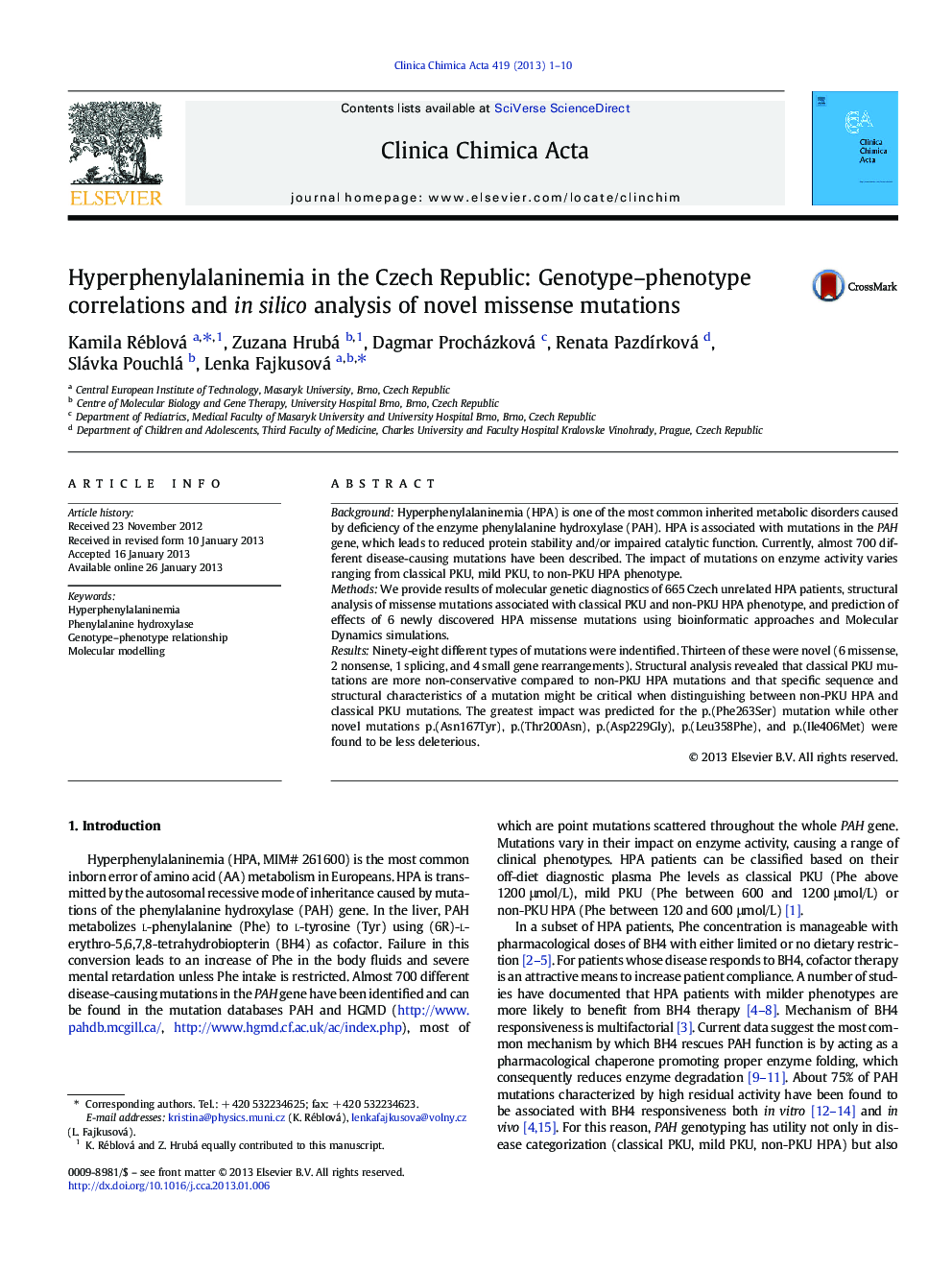| کد مقاله | کد نشریه | سال انتشار | مقاله انگلیسی | نسخه تمام متن |
|---|---|---|---|---|
| 1965604 | 1538679 | 2013 | 10 صفحه PDF | دانلود رایگان |

BackgroundHyperphenylalaninemia (HPA) is one of the most common inherited metabolic disorders caused by deficiency of the enzyme phenylalanine hydroxylase (PAH). HPA is associated with mutations in the PAH gene, which leads to reduced protein stability and/or impaired catalytic function. Currently, almost 700 different disease-causing mutations have been described. The impact of mutations on enzyme activity varies ranging from classical PKU, mild PKU, to non-PKU HPA phenotype.MethodsWe provide results of molecular genetic diagnostics of 665 Czech unrelated HPA patients, structural analysis of missense mutations associated with classical PKU and non-PKU HPA phenotype, and prediction of effects of 6 newly discovered HPA missense mutations using bioinformatic approaches and Molecular Dynamics simulations.ResultsNinety-eight different types of mutations were indentified. Thirteen of these were novel (6 missense, 2 nonsense, 1 splicing, and 4 small gene rearrangements). Structural analysis revealed that classical PKU mutations are more non-conservative compared to non-PKU HPA mutations and that specific sequence and structural characteristics of a mutation might be critical when distinguishing between non-PKU HPA and classical PKU mutations. The greatest impact was predicted for the p.(Phe263Ser) mutation while other novel mutations p.(Asn167Tyr), p.(Thr200Asn), p.(Asp229Gly), p.(Leu358Phe), and p.(Ile406Met) were found to be less deleterious.
► Molecular genetic analysis of 665 unrelated Czech HPA patients
► Genotype–phenotype correlations and results of the BH4-loading test
► In-silico analysis of selected HPA missense mutations
Journal: Clinica Chimica Acta - Volume 419, 18 April 2013, Pages 1–10